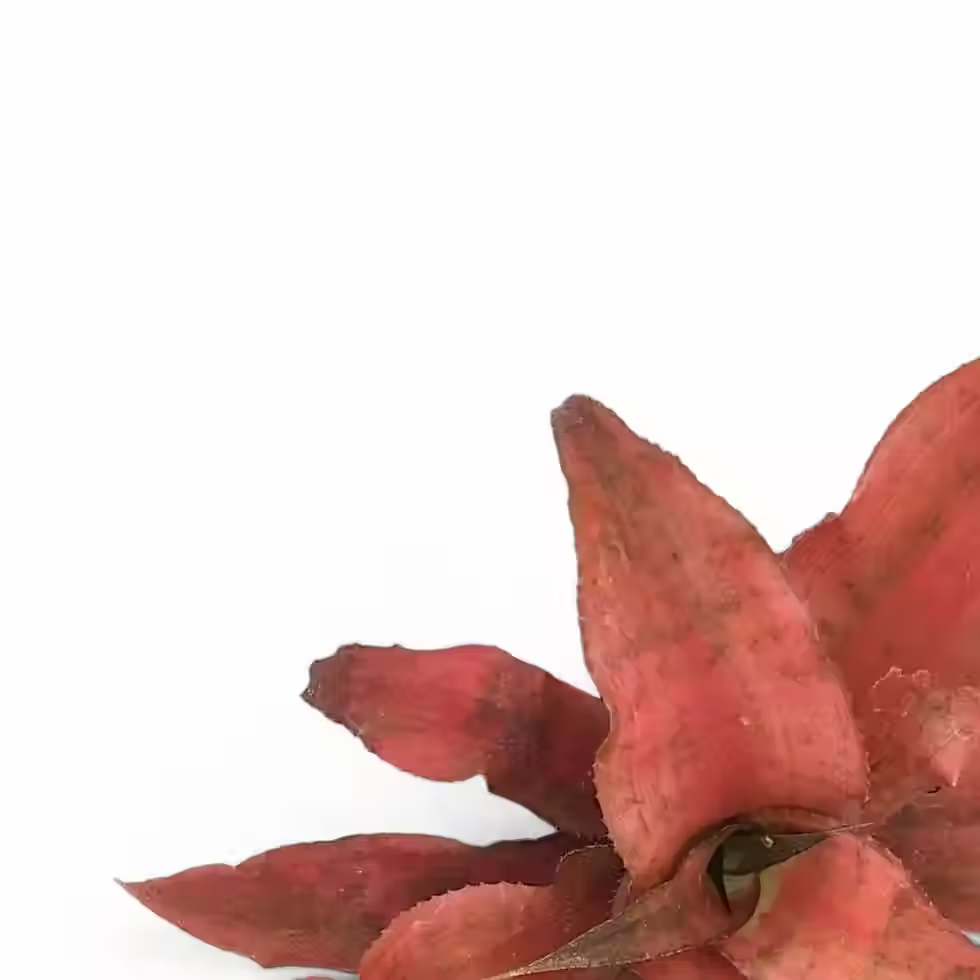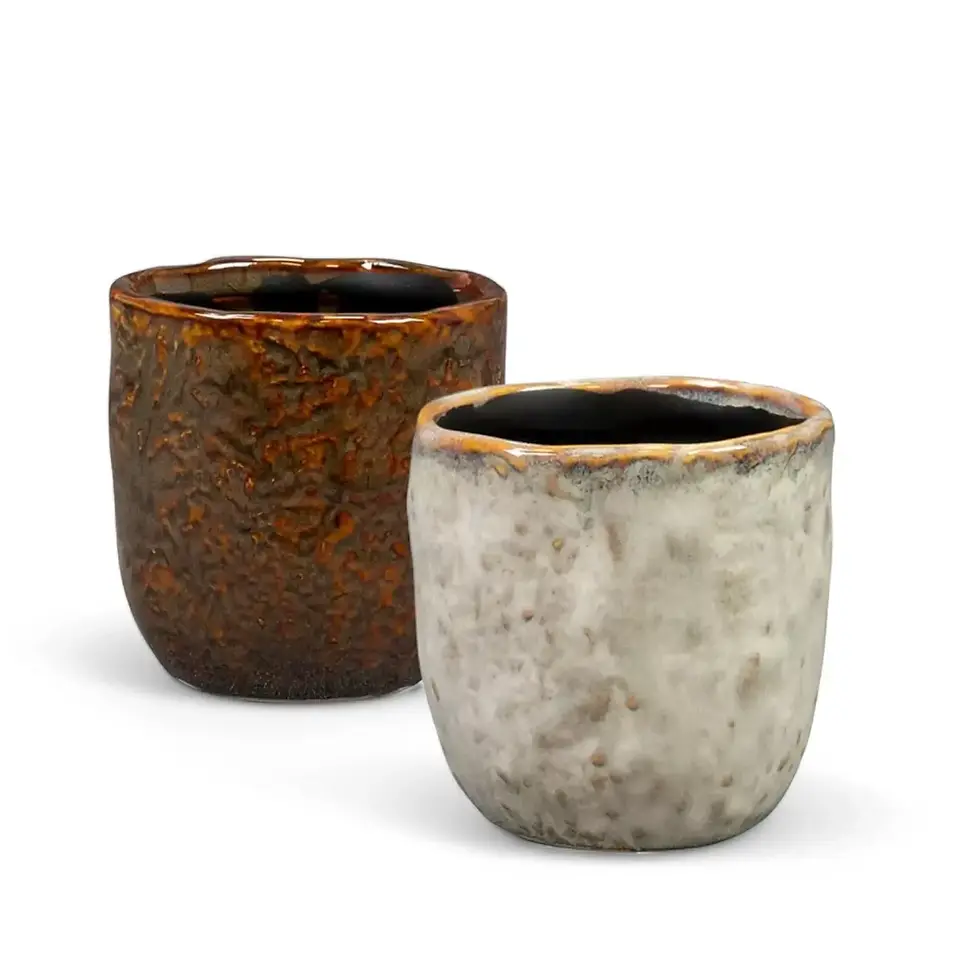Alocasia 'Jacklyn' - Information and Plant Care
Alocasia 'Jacklyn', a unique cultivar of Alocasia tandurusa, stands out with its deeply lobed, pinnatifid leaves resembling intricate deer antlers. The vibrant green foliage, textured with subtle pubescence, is accented by contrasting darker veins that create an unparalleled visual appeal. The undersides of its leaves may reveal a striking purple hue, making every angle of this plant a masterpiece. Perfect for plant enthusiasts seeking a rare specimen, Alocasia 'Jacklyn' brings a touch of botanical luxury into any home.
Key Features and Unique Traits of Alocasia 'Jacklyn'
- Distinctive Foliage: Deeply lobed, pinnatifid leaves with a velvety texture and bold vein patterns.
- Compact Growth Habit: Grows up to 1 meter tall, with elegant, curved rhizomes supporting the leaf stalks.
- Dynamic Coloring: Subtle pubescence on the upper surface contrasts with the glabrous, occasionally purple-tinged underside.
- Eye-catching Petioles: Mottled patterns in shades of brown and purple add extra charm.
Essential Facts About Alocasia 'Jacklyn'
- Natural Habitat: Native to the wet lower montane forests of Northern Sulawesi, Indonesia.
- Preferred Climate: Thrives in moderate humidity (60-70%) and temperatures ranging from 9°C to 31°C.
- Growth Context: Upright growth habit, reaching up to 1 meter indoors.
- Toxicity: Toxic to pets and humans if ingested.
Caring for Alocasia 'Jacklyn'
- Placement: Position in bright, indirect light to prevent leaf scorching.
- Watering: Keep the soil evenly moist but avoid overwatering.
- Humidity: Requires 60-70% humidity use a humidifier if needed.
- Temperature: Prefers 18°C-27°C, avoiding cold drafts.
- Soil: Use a well-draining mix containing perlite, and orchid bark.
- Repotting: Repot every 1-2 years into a pot with adequate drainage.
- Fertilizing: Apply a balanced liquid fertilizer every 4-6 weeks during active growth.
- Propagation: Divide rhizomes during repotting, ensuring each has healthy roots and leaves.
- Semi-Hydroponics: Adaptable to LECA and similar substrates.
- Pruning: Remove yellow or damaged leaves to maintain health.
- Growth Rate: Moderate juvenile leaves may appear peltate before maturing into deeply lobed forms.
Potential Problems with Alocasia 'Jacklyn' and Their Solutions
→ Common Pests:
- Spider Mites: Fine webbing and yellow speckling. Treat with neem oil or insecticidal soap.
- Mealybugs: Remove with a cotton swab dipped in alcohol and apply neem oil.
- Thrips: Identified by streaking or silvering on leaves. Treat with insecticidal soap and increase humidity.
- Fungus Gnats: Caused by overly moist soil. Allow soil to dry slightly and use sticky traps.
→ Root and Leaf Issues:
- Root Rot: Prevent by using well-draining soil and pots with drainage holes.
- Yellowing Leaves: Overwatering is the main cause adjust watering frequency.
- Browning Leaf Tips: Often linked to low humidity or salt buildup increase humidity and flush soil if necessary.
- Drooping Leaves: May indicate underwatering, temperature stress, or low humidity.
→ Fungal Problems:
- Leaf Spot Diseases: Appear as dark spots with yellow halos remove affected leaves and apply fungicide.
- Crown Rot: Avoid excess moisture and improve soil aeration.
→ Environmental Stress:
Prevent sudden changes in light, temperature, or humidity to avoid leaf drop and stress-related issues.
Additional Tips for Alocasia 'Jacklyn' Care
Mimicking the native environment of Alocasia tandurusa ensures the plant thrives. High humidity, stable temperatures, and filtered light will support its unique foliage development.
The Story Behind the Name
The name Alocasia 'Jacklyn' was popularized by Enjie Jacklin, a local from Gorontalo, Sulawesi, who introduced the plant internationally. Initially called ‘Jacklin’, the name evolved into ‘Jacklyn’ due to a likely typo. Scientifically classified as Alocasia tandurusa by Prameswara and A. Hay in 2023, the species name refers to the Indonesian word “Tanduk Rusa,” meaning deer antlers—fitting for its deeply lobed foliage.
Frequently Asked Questions About Alocasia 'Jacklyn'
- Can Alocasia 'Jacklyn' tolerate direct sunlight? No, it thrives in bright, indirect light.
- How often should I water my Alocasia 'Jacklyn'? Water when the top layer of soil feels dry.
- Is Alocasia 'Jacklyn' suitable for hydroponics? Yes, it adapts well to semi-hydroponic setups.
- Does Alocasia 'Jacklyn' require high humidity? Yes, 60-70% humidity is ideal for its growth.
Order Your Alocasia 'Jacklyn' Today!
Add this extraordinary plant to your collection and enjoy its captivating beauty. Shop now to secure your Alocasia 'Jacklyn' and bring a rare piece of Sulawesi’s natural elegance into your home.
Alocasia 'Jacklyn'
Alocasia tandurusa 'Jacklyn' comes in following sizes:
Plug (Starter Plant) – ⌀ 2 cm and is approximately 8 cm tall
Baby Plant – comes in a ⌀ 6 cm pot and is approximately 10 cm tall
S – comes in a ⌀ 10.5 cm pot and is approximately 15 cm tall
M – comes in a ⌀ 14 cm pot and is approximately 30 cm tall

























































